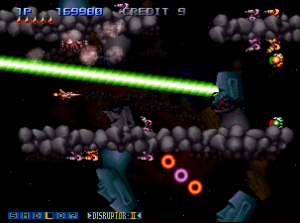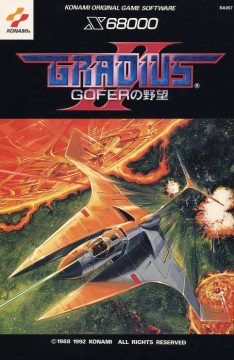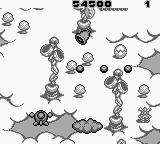

They make brief showings in the video game Tyrian by Epic Games.
GRADIUS GAIDEN TAUNT PS2
In the PS2 game Castlevania: Curse of Darkness, a player can collect a Moai item behind the castle, provided they have a Castlevania: Lament of Innocence save on the memory card.
GRADIUS GAIDEN TAUNT TV
After turning up in the PlayStation battle game Poy Poy, they later appeared in a racing game titled Konami Krazy Racers for the Game Boy Advance and in the fighting game DreamMix TV World Fighters for the Nintendo GameCube and PlayStation 2. The first being in an action platform game with Konami characters called Konami Wai Wai World and a platform/puzzle named Moai-Kun, both for the Famicom. There have even been four games where the Moai have even been a playable character.
GRADIUS GAIDEN TAUNT SERIES
Since then they have become so intertwined with the series it is not uncommon for them to cameo in other Konami games. Because they face at an angle or lie flat on the ground, the up-facing Moai are best destroyed with missiles. The weak point is at the mouth, when open. They are mounted on either side of the ground (which are flat free-floating platforms) and fire a series of colorful rings at the Vic Viper. For other types of bosses, like large beasts, the announcer may command the player to "Destroy the eye!" or "Destroy the mouth!", depending on the boss.įor reasons unknown, the famous Moai statues appear as enemies in several Gradius games. Additionally, the announcer will normally urge the player to "Destroy the core!" or "Shoot the core!" prior to an encounter. All cores must be targeted in order to defeat a warship, which normally comprises several phases and often uses the terrain to its advantage.

Cores are usually blue, glowing masses of energy hidden within large warships and protected by a series of barriers. The concept of the "Core" is a central part of Gradius. Weapon edit, first introduced in Gradius III, allows players to construct a custom weapon route from the basic categories, such as missile and laser, and replace these accordingly with a variation of a weapon of their choice. Other games using a similar power-up method include Contra Force by Konami, Slap Fight by Toaplan, and Rare's Cobra Triangle. Traditionally, the power-ups with greater effects are placed toward the end of the bar, so that the player must do more work to obtain them, although in some titles like Gradius III a harmful power-up exists at the end which will restore the default (weak) weapon configuration. The player may now activate this to receive a missile weapon, again causing the bar to revert to its unhighlighted state, or choose to hold out for the next item, a double gun. Gradius power meter with second power-up highlighted If, however, the player does not activate the power-up, and collects another power-up item, the highlight moves to the next item in the original game this was a missile. The player may now activate this power-up to increase their speed, in which case the meter will revert to its original unhighlighted state.

Gradius power meter with first power-up highlighted Thus, when the player collects a power-up item for the first time, the first power-up (usually a speed increase) becomes highlighted. When a power-up that the player wants becomes highlighted, they may activate it, causing the highlight to move back to the beginning again.

The power meter is powered by power-up items, whose purpose, when collected, is to move a highlight to the next power-up on the power meter. One of the defining characteristics of the Gradius series is the use of a Power Meter. There are several gameplay elements that are common to almost all the Gradius games.


 0 kommentar(er)
0 kommentar(er)
